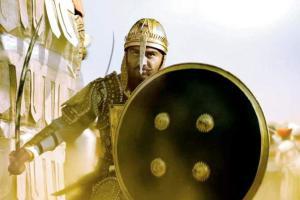The battle was known to be the most violent one that was fought between the Maratha Empire and Afghan invaders on January 14, 1761

A still from the upcoming film Panipat, based on the Third Battle of Panipat
The three battles of Panipat were some of the most violent battles in Indian history. The battles which happened before the British took hold of the country were fought between different armies – the first one between Babur of the Mughal Empire and the Lodi Kingdom on April 21, 1526, the second one fought between North Indian Hindu Emperor Hem Chandra Vikramaditya and Mughal Emperor Akbar's forces on November 5, 1556, and the third and the most violent one was fought between the Maratha Empire and Afghan invaders on January 14, 1761.
ADVERTISEMENT
For the Maratha army, the war was led by Sadashivrao Bhau, a third-in-command after the king (Chhatrapati) and the prime minister (Peshwa) who was the commander-in-chief. The Afghan army was led by their king, Ahmed Shah Abdali, who is known as the founder of the Durrani Empire and the modern state of Afghanistan, with the support of three allies -- the Rohillas, led by Najib-Ud-Daula, the Afghans of the Doab region and Shuja-Ud-Daula, the Nawab of Awadh.
Prior to the dawn of January 14, 1761, as the Marathas prepared to combat in the trenches in Panipat, the Afghans who were 2 km away from them, opened fire. The Marathas retaliated under the leadership of Ibrahim Khan and attacked the Rohilla and Shah Pasand Khan, another supporter of the Afghan forces. The back-and-forth attacks saw the Rohillas leaving the battlefield after losing 12,000 soldiers.
In the second phase of the battle, the Marathas, led by Sadashivrao Bhau, charged on the Afghans, under their chief Vizier Shah Wali Khan. The attack led to a confused Afghan force deserting their position after which Shah Wali Khan called upon Shuja-Ud-Daula to assist him. The move did no good for the force as they continued to weaken.
The final phase of the attack saw the Marathas, under the leadership of the Scindias attacking the forces, this time under Najib-Ud-Daula who fought a successful defensive action. But things were not looking up for Bhau's cavalry. Shah Abdali brought out a troop of 2,000 soldiers with swivel-mounted cannons and sent them to fight along with 4,000 of his reserve troops, equipped with armoured leather jackets, to break the Maratha forces' back. The Maratha cavalry was not able to withstand this attack and resorted to hand-to-hand combat till they collapsed from exhaustion.
With the strength of the force dwindling, Bhau also alighted from his elephant and joined the soldiers in the fight. Taking advantage of the situation, the Afghan prisoners caught by the Marathas, took out the green belts worn as turbans to impersonate the Durrani army's troops and started a fight among them. As Shah Abdali targeted the Maratha's Gardi cavalry, Bhau ordered Vitthal Vinchurkar and the Maharaja of Baroda, Damaji Gaikwad to protect them from the attacks.
The Marathas who were equipped with swords were surprised with rifle attacks from the Rohillas, that saw them lose Vishwasrao Bhat, the then next-in-line to the Peshwa throne after being shot in the head. Bhau and the forces too fought till the end after which the former was shot and succumbed to his injuries. The Maratha forces, by then, knew that they were losing the battle and chose to escape.
Catch up on all the latest Crime, National, International and Hatke news here. Also download the new mid-day Android and iOS apps to get latest updates
 Subscribe today by clicking the link and stay updated with the latest news!" Click here!
Subscribe today by clicking the link and stay updated with the latest news!" Click here!






